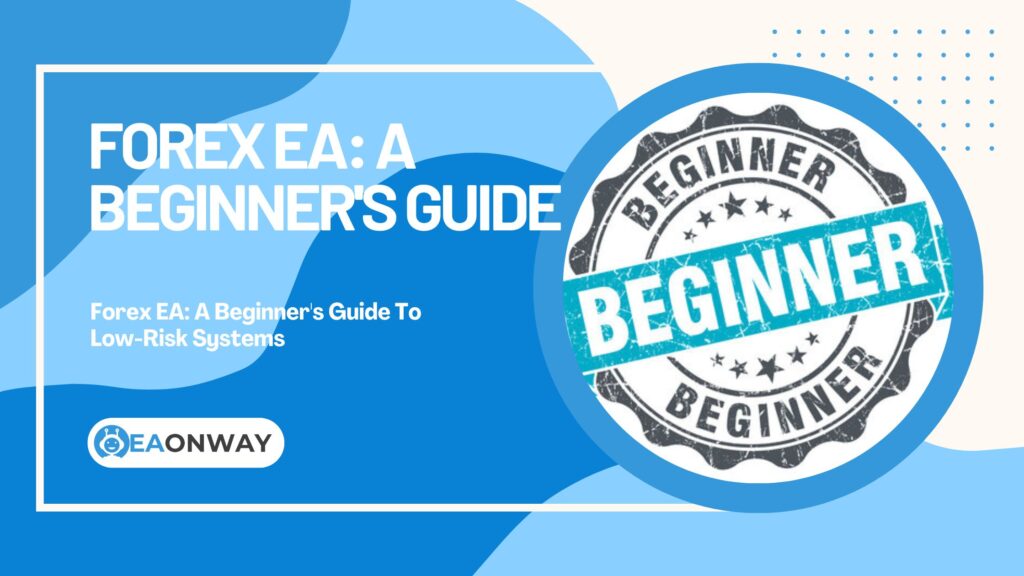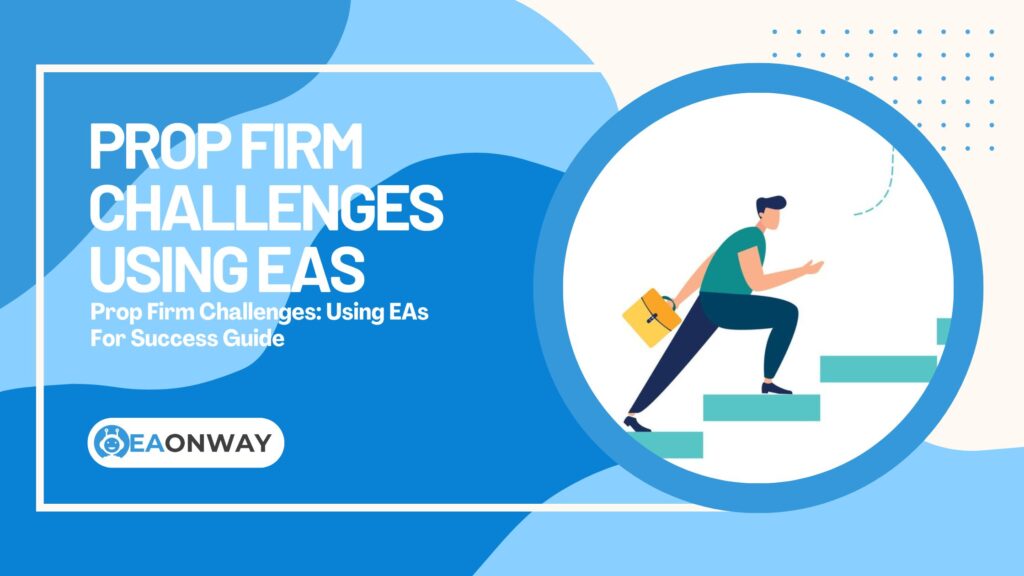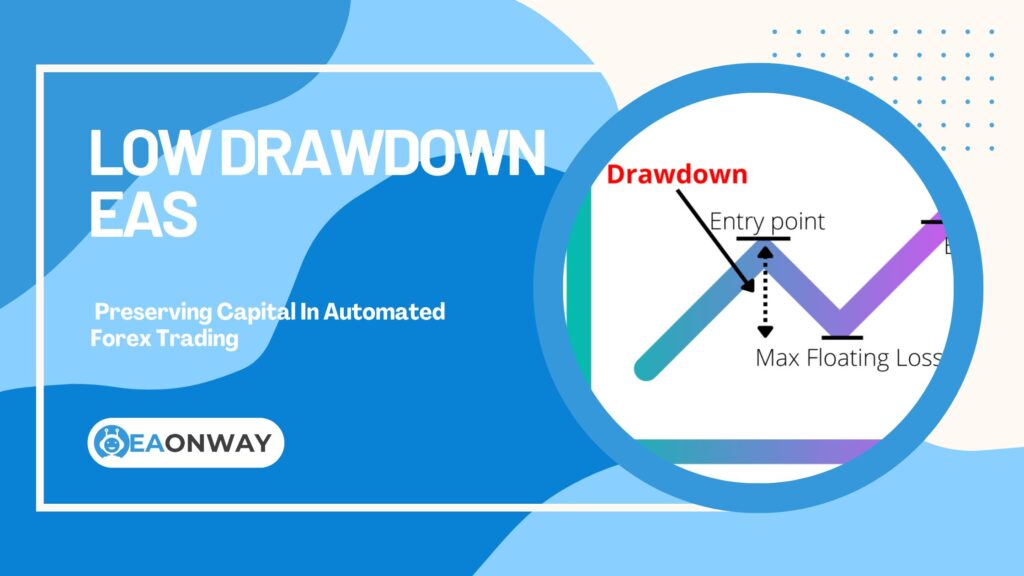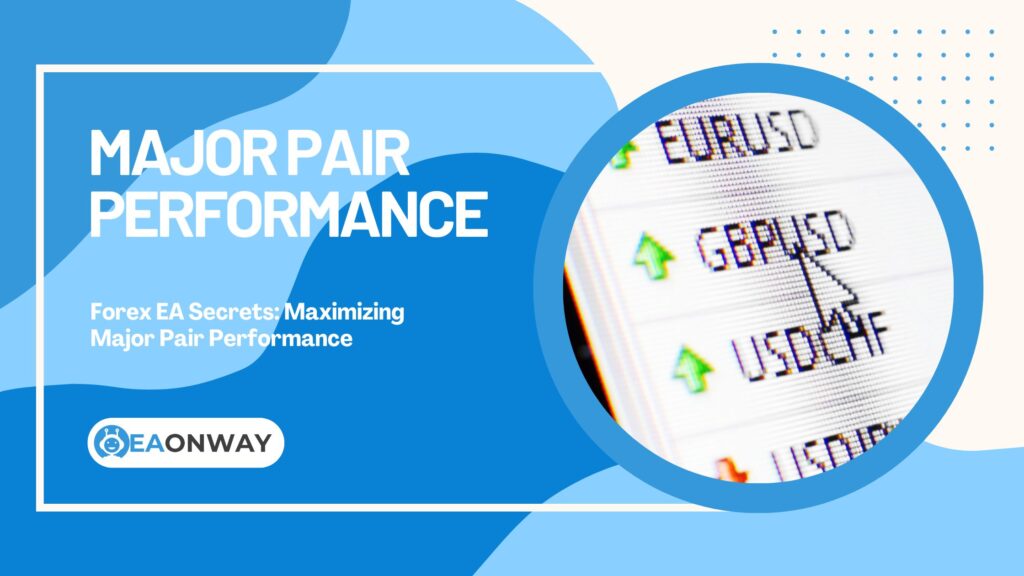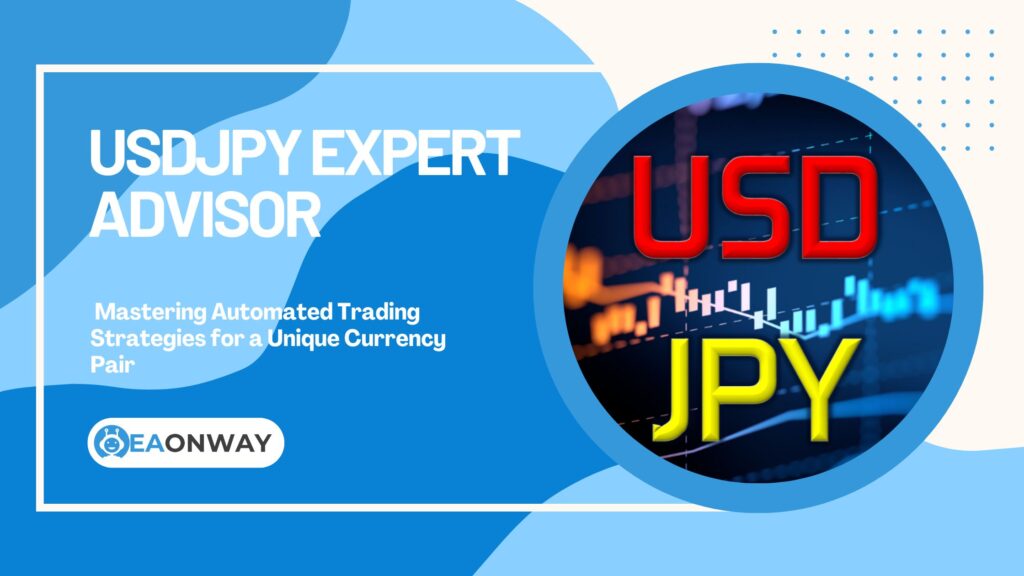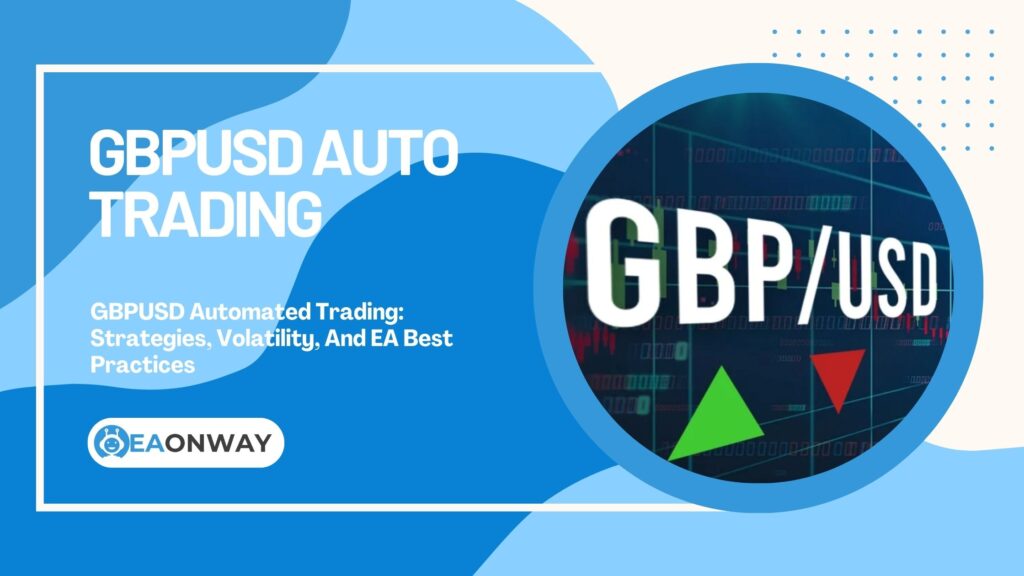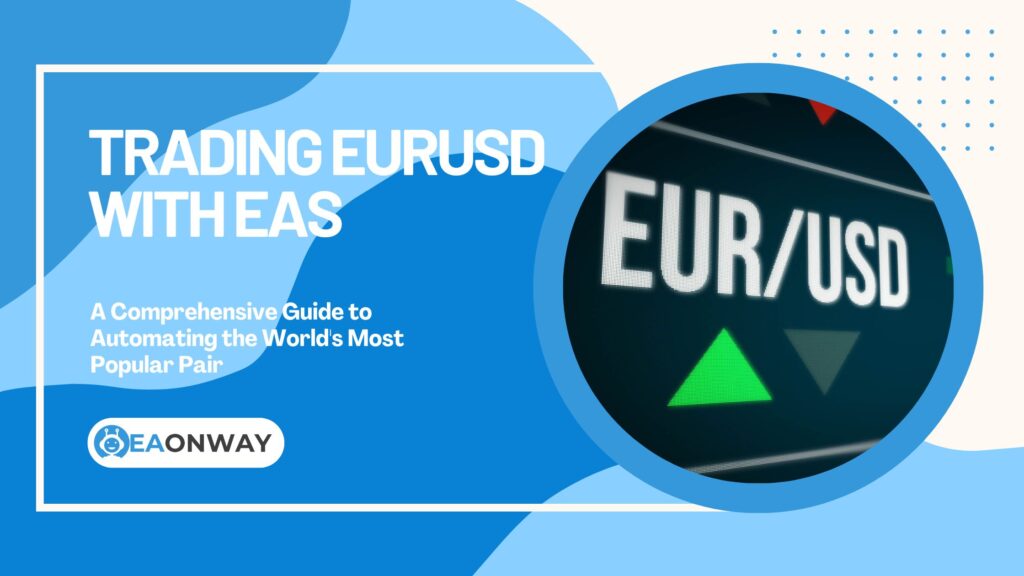Common EA Trading Strategies
Arbitrage EAs: Exploiting Fleeting Market Inefficiencies Automated
Arbitrage EAs: Exploiting Fleeting Market Inefficiencies Automated
The world of Forex trading is rife with complex strategies, and among the most intriguing are those involving Arbitrage EAs. These sophisticated Forex arbitrage software tools promise to capitalize on tiny, fleeting price discrepancies, but do these automated arbitrage systems truly offer a consistent edge, or are they fraught with hidden perils? The allure of profiting from minute market inefficiencies using automated systems is strong, yet understanding the mechanics, the different types like latency arbitrage and triangular arbitrage, and especially the substantial risks, is crucial. This article delves into the core of Arbitrage EAs, aiming to demystify how they function, how automated systems find arbitrage opportunities, the fundamentals of automated arbitrage systems, and importantly, to highlight the potential pitfalls, helping you approach this niche with informed caution rather than unrealistic expectations of effortless gains. We will explore what an arbitrage EA is, how arbitrage EAs work, what market inefficiencies for arbitrage are targeted, and whether arbitrage with EAs is a viable path for most traders.
Quick Summary: Key Insights on Arbitrage EAs
Before we dive deep, here’s a snapshot of what you need to know about Arbitrage Expert Advisors:
- Core Function: Arbitrage EAs are specialized Forex EAs, essentially automated trading software, designed to identify and exploit minuscule price differences for the same asset across different brokers, exchanges, or within currency pair relationships.
- Operational Principle: They aim to execute near-simultaneous buy and sell orders to lock in small, frequent profits arising from these temporary market inefficiencies.
- Common Strategies: Key approaches include latency arbitrage (exploiting speed differences in price feeds), triangular arbitrage (profiting from misaligned cross-currency rates), and statistical arbitrage (based on historical price relationships).
- Critical Dependencies: Success hinges on ultra-low latency execution, robust and fast technology (like a dedicated VPS for Forex arbitrage), reliable price feeds, and navigating considerable risks.
- Significant Risks: Major challenges include slippage (price changes between order placement and execution), broker countermeasures (who may restrict or penalize such activities), high operational costs, and the competitive nature of finding and acting on these opportunities.
- Not a Guaranteed Solution: Arbitrage EAs, including MT4 arbitrage EAs and MT5 arbitrage trading systems, are not a foolproof method for generating profit and involve substantial complexities and risks. Understanding these is paramount before considering their use.
What Exactly Are Arbitrage EAs?
To understand Arbitrage EAs, we first need to grasp the concept of arbitrage itself and how automation plays a role in this high-speed trading environment. These tools are a specific application of algorithmic trading arbitrage.
Defining Arbitrage in Financial Markets
What is arbitrage in the financial context? Arbitrage is the practice of simultaneously buying and selling an identical asset in different markets to profit from a temporary price discrepancy. For instance, if Gold is priced at $1800.00 on one exchange and $1800.50 on another, an arbitrageur could theoretically buy on the first and sell on the second for a $0.50 profit per unit, minus transaction costs. This price discrepancy trading relies on market inefficiency.
How Do Arbitrage EAs Automate This Process?
How do Arbitrage EAs automate this complex task? An Arbitrage EA, also known as an arbitrage robot or Forex arbitrage software, is an algorithm programmed to perform these actions automatically. It continuously monitors multiple price feeds from different brokers or liquidity providers. When it detects a viable price difference that covers transaction costs, it attempts to execute the buy and sell orders almost instantaneously. This automation is crucial because arbitrage opportunities are often extremely short-lived, lasting mere milliseconds.
The Core Goal: Exploiting Market Inefficiency
What market inefficiencies for arbitrage do these EAs target? The fundamental goal of any arbitrage strategy, automated or manual, is market inefficiency exploitation. In a perfectly efficient market, all information would be instantly reflected in prices, and arbitrage opportunities would not exist. However, real-world markets are not always perfectly efficient due to factors like information delays, different trading speeds across venues, and varied supply/demand dynamics. Arbitrage EAs aim to capitalize on these fleeting moments before the market self-corrects.
How Do Arbitrage EAs Actually Work? The Mechanics Explained
Understanding the inner workings of Arbitrage EAs reveals their complexity and reliance on speed and precision. These automated arbitrage systems are intricate pieces of software.
What Are the Key Components of an Arbitrage EA System?
An effective Arbitrage EA setup typically consists of several critical components:
- Multiple Fast Data Feeds: Access to real-time, high-speed price data from various sources (brokers, exchanges) is essential. The quality and speed of these feeds directly impact the EA’s ability to identify opportunities.
- Decision Engine (Algorithm): This is the core logic of the EA. It analyzes the incoming price feeds based on its programmed strategy (e.g., latency, triangular) to identify potential arbitrage opportunities that exceed a certain profit threshold after estimated costs.
- Order Execution Module: This component interfaces with the trading platform (like MetaTrader 4 or MetaTrader 5) to place buy and sell orders with extreme speed. Low latency execution is paramount here.
- Risk Management Module: While “pure” arbitrage is theoretically low risk per trade, EAs often include parameters for maximum trade size, acceptable slippage, and sometimes, overall capital exposure limits.
- Connectivity and Infrastructure: This includes a stable, high-speed internet connection and, typically, a Virtual Private Server (VPS) located geographically close to the broker’s servers to minimize network latency.
How Do Automated Systems Find Arbitrage Opportunities?
How do these automated systems pinpoint these elusive chances? Automated systems, such as Arbitrage EAs, find arbitrage opportunities by constantly comparing price quotes for the same financial instrument (or a related set of instruments in triangular arbitrage) across different market venues or from different price feeds. The algorithm looks for specific conditions: for instance, where the bid price (the price at which you can sell) at one venue is higher than the ask price (the price at which you can buy) at another venue for the same asset, after accounting for spreads and commissions. When such a profitable price discrepancy trading scenario is detected, the system is programmed to execute trades automatically.
The Importance of Speed: Low Latency Execution
Why is speed so critical? Low latency execution is the lifeblood of most arbitrage strategies, especially latency arbitrage. Arbitrage opportunities are often minuscule and disappear in fractions of a second as other market participants or algorithms also try to exploit them. Even a delay of a few milliseconds in receiving price data or executing an order can mean the difference between a small profit and a loss, or a missed opportunity altogether. This makes a VPS for Forex arbitrage almost indispensable.
What Role Does a VPS Play in Arbitrage Trading?
A Virtual Private Server (VPS) plays a crucial role, particularly for Forex arbitrage. A VPS ensures that the Arbitrage EA can run 24/7 without interruption, even if the trader’s personal computer is off or experiences connectivity issues. More importantly, by choosing a VPS provider with servers located physically close to the broker’s trading servers, traders can significantly reduce network latency – the time it takes for data to travel between the EA and the broker. This reduction in delay is vital for the success of high-frequency arbitrage strategies.
Common Types of Arbitrage Strategies Used by EAs
Arbitrage EAs can be programmed to execute various types of arbitrage. Understanding these strategies provides insight into their operational nuances and specific requirements.
What is Latency Arbitrage EA and How Does It Function?
A Latency Arbitrage EA is designed to exploit tiny delays or discrepancies in the price feeds between a “fast” broker (or data provider) and a “slower” broker. The EA subscribes to a very fast price feed to get early indications of price movements. When it detects a price change on the fast feed, it quickly places a trade on the slower broker’s platform, anticipating that the slower broker’s price will soon catch up. This is a form of high-frequency arbitrage.
- Rationale: This strategy capitalizes on technological differences in how quickly brokers update and disseminate their price quotes.
- Example: If EUR/USD moves up on the fast feed, the EA buys EUR/USD on the slow broker before its price reflects the change.
- Critical Risk: Extremely sensitive to network speed and execution quality. Brokers often actively try to prevent this type of arbitrage if they detect it, as it can be seen as exploiting their system’s inefficiencies. Many users search for “latency arbitrage explained” to grasp these intricacies.
What is Triangular Arbitrage EA in Forex?
A Triangular Arbitrage EA in Forex seeks to profit from inconsistencies in the exchange rates of three different currency pairs. The EA simultaneously places three trades to convert an initial currency into a second, the second into a third, and the third back into the original currency, aiming to end up with more of the initial currency than started with.
- Example: Consider three pairs: EUR/USD, GBP/USD, and EUR/GBP. If the direct EUR/GBP rate is misaligned with the rate implied by EUR/USD and GBP/USD, an opportunity might exist. For example, sell USD for EUR, then sell EUR for GBP, then sell GBP back for USD.
- Challenge: Requires precise calculation of cross-rates and simultaneous execution of three trades, where slippage on any leg can negate the profit. Developing arbitrage EAs for this strategy is complex.
- Important Note: Transaction costs (spreads and commissions) on all three legs must be factored in, making profitable opportunities rare.
Statistical Arbitrage: Beyond Simple Price Gaps
Statistical arbitrage strategies are more complex than direct price arbitrage. These EAs use quantitative models to identify temporary statistical mispricings between related assets based on their historical price relationships and correlations.
- Example: If two currency pairs (e.g., AUD/USD and NZD/USD) historically move in tandem but temporarily diverge significantly, a statistical arbitrage EA might simultaneously sell the outperforming pair and buy the underperforming one, betting on their eventual convergence back to their historical mean.
- Complexity: These strategies require sophisticated mathematical modeling, extensive backtesting, and ongoing calibration as market relationships can change. They are less about “risk-free” arbitrage and more about probabilities.
Other Forms: Broker Arbitrage and Cross-Asset Arbitrage
- Broker Arbitrage (or Two-Leg Arbitrage): This is one of the most common forms discussed. It involves an EA monitoring the price of the same instrument (e.g., EUR/USD) across two different brokers. If Broker A offers a lower ask price than Broker B’s bid price for EUR/USD, the EA attempts to buy from Broker A and simultaneously sell to Broker B.
- Cross-Asset Arbitrage: This is less common for retail EAs due to complexity and capital requirements. It involves finding price discrepancies between a primary asset and its derivatives (e.g., a stock and its options or futures) or between highly correlated assets in different markets.
The Alluring Premise: Why Do Traders Consider Arbitrage EAs?
The concept of arbitrage, especially when automated, holds a certain appeal for traders seeking alternative approaches to the market.
The Appeal of “Risk-Free” Profits (and Why It’s a Misconception)
The primary allure of arbitrage stems from its theoretical “risk-free” nature. If an asset can be bought at one price and simultaneously sold at a higher price, the profit seems guaranteed. However, this is a dangerous oversimplification in the context of retail Arbitrage EAs. While a single, perfectly executed arbitrage trade might appear risk-free in isolation, the reality is that execution risk (slippage, delays), counterparty risk (broker issues), and technological failures introduce significant elements of risk. The term “risk-free” is largely a myth for most retail traders attempting arbitrage. The Bank for International Settlements (BIS) often highlights how efficient markets quickly eliminate such pure arbitrage opportunities, suggesting that persistent, easily accessible ones are rare (Source: BIS Working Papers on Market Efficiency).
Automation and Efficiency: Trading Without Emotion
One of the strong attractions of automated arbitrage systems is their ability to operate without human emotional biases like fear or greed. An EA will execute trades based purely on its programmed logic, 24 hours a day if the market is open, tirelessly scanning for opportunities. This appeals to traders who struggle with emotional decision-making or lack the time for continuous manual market monitoring.
Capitalizing on Fleeting Opportunities Humans Can’t Catch
Arbitrage opportunities, especially in liquid markets like Forex, are often fleeting, existing for mere milliseconds. Human traders simply cannot react quickly enough to identify and act on these micro-opportunities. Arbitrage EAs, designed for high-speed operations, can theoretically capture these chances that are invisible or inaccessible to manual traders.
The Harsh Realities: Unmasking the Risks of Arbitrage EAs
While the premise is attractive, it’s crucial to approach Arbitrage EAs with a clear understanding of their substantial risks and challenges. This is where many aspiring arbitrage traders face disappointment.
What Are the Main Risks of Arbitrage EAs?
The main risks associated with Arbitrage EAs are numerous and can quickly erode or negate any potential profits. These include:
- Execution Delays (Latency): Even with a fast VPS, network latency or delays in broker execution can cause the price to change before your order is filled, invalidating the arbitrage.
- Slippage: The difference between the expected price of a trade and the price at which the trade is actually executed.
- Broker Countermeasures: Brokers may actively discourage or penalize arbitrage trading.
- Technological Failures: Software bugs, VPS outages, or internet connection problems.
- High Costs: The need for specialized software (Forex arbitrage software), fast VPS hosting, and potentially multiple broker accounts.
- Competition: You are competing against other EAs and sophisticated institutional high-frequency trading firms with far greater resources.
Understanding these risks of arbitrage bots is fundamental.
Slippage in Arbitrage: When Profits Vanish
What is slippage in arbitrage and why is it so impactful? Slippage is a critical risk. Arbitrage EAs typically aim for very small profits per trade (often just a few fractions of a pip). If the market price moves adversely by even a tiny amount between the moment the EA identifies an opportunity and the moment the trade is executed, the anticipated profit can be wiped out or even turn into a loss. This is a constant threat in price discrepancy trading.
- Example: An EA detects a 0.5 pip arbitrage opportunity. If combined slippage on the buy and sell legs amounts to 0.5 pips or more, the trade is no longer profitable.
Latency Sensitivity: The Speed Arms Race
As highlighted in the latency arbitrage explained section, these strategies are incredibly sensitive to speed. You are in a constant “arms race” against other market participants. If your EA’s reaction time and execution speed are not among the absolute fastest, the fleeting opportunities will be captured by quicker systems. Maintaining this speed advantage requires ongoing investment in technology and optimal VPS for Forex arbitrage configurations.
Broker Countermeasures and Restrictions
This is a significant, often underestimated, risk. Many brokers, particularly market makers, do not welcome arbitrage trading, especially aggressive latency arbitrage, as it can lead to consistent losses for them if they cannot manage their price feeds and execution effectively. Potential countermeasures include:
- Increased Spreads or Commissions: Brokers might widen spreads specifically for accounts identified as engaging in arbitrage.
- Execution Delays or Requotes: Deliberately slowing down execution or frequently requoting prices for suspected arbitrage traders.
- Voiding Profitable Trades: Some brokers reserve the right in their terms and conditions to cancel trades they deem to be exploiting system latencies or price feed errors.
- Account Closure: In extreme cases, brokers may close accounts engaging in prohibited arbitrage activities.
It’s essential to scrutinize a broker’s terms of service. For instance, regulatory bodies like the Cyprus Securities and Exchange Commission (CySEC) have rules on fair execution, but brokers also have risk management policies (Source: CySEC Directive DI87-01 regarding a Cyprus Investment Firm’s Own Funds Requirements – this discusses operational risk which indirectly relates to how brokers manage abusive trading). Most brokers explicitly outline their policies on arbitrage trading in their terms and conditions, which can be found on their respective websites.
Technological Failures: System Crashes and Connectivity Issues
Relying entirely on technology means being vulnerable to its failures. An Arbitrage EA needs a perfectly stable environment. Issues like:
- Internet connection disruptions.
- VPS crashes or performance degradation.
- Trading platform (e.g., MT4, MT5) freezing or disconnecting.
- Bugs within the Arbitrage EA software itself.
Any of these can lead to missed opportunities, inability to close open positions, or erroneous trades.
The “No Free Lunch” Principle: Why True Arbitrage is Rare and Difficult
In financial markets, there’s a general principle: “there’s no such thing as a free lunch.” If truly risk-free, easily accessible arbitrage opportunities were abundant, they would be arbitraged away almost instantaneously by large institutional players with billion-dollar infrastructures and co-located servers. The very act of arbitrage helps make markets more efficient, thus reducing the frequency and size of such opportunities over time. Retail traders with standard Arbitrage EAs are often picking up crumbs, if anything, and face immense competition.
High Costs of Operation: VPS, Data Feeds, and Software
Running an effective arbitrage setup is not cheap. Costs can include:
- High-Performance VPS: A low-latency VPS for Forex arbitrage, often costing more than standard VPS plans.
- Premium Data Feeds: Some strategies might benefit from faster, direct data feeds beyond standard broker feeds.
- EA Software Cost: Commercial Arbitrage EAs can be expensive.
- Multiple Broker Accounts: May require funding several accounts to execute across different venues.
These ongoing costs need to be covered by profits, which can be challenging given the small margins per trade.
The Risk of “Curve-Fitting” in Backtests
When evaluating top Arbitrage EAs, beware of stellar backtest results that seem too good to be true. Some developers might “curve-fit” their EA’s parameters to historical data, meaning the EA is optimized to perform exceptionally well on past data but may fail miserably in live trading conditions because it hasn’t learned robust patterns, only noise from a specific past period.
Is Arbitrage with EAs Legal and Ethical?
The legality and ethics of using Arbitrage EAs are important considerations for any trader.
Legality: Is Arbitrage with EAs Generally Permitted?
Is arbitrage with EAs legal? Yes, arbitrage itself, as a trading strategy aiming to profit from price differences, is a perfectly legal market activity. It’s a fundamental mechanism that contributes to market efficiency. However, the methods employed by certain types of Arbitrage EAs, particularly those aggressively exploiting system vulnerabilities or specific broker price feed latencies, can sometimes fall into a grey area or be explicitly against a broker’s terms of service.
Broker Terms of Service: The Deciding Factor
The crucial factor is often the specific broker’s terms and conditions (T&Cs). While general financial regulations (e.g., from bodies like the U.S. Securities and Exchange Commission (SEC) or the UK’s Financial Conduct Authority (FCA)) don’t outlaw arbitrage, brokers are private entities that can set their own rules for using their platforms. Many brokers explicitly state in their T&Cs that strategies exploiting latency or price feed errors are not permitted. Engaging in such activities could lead to:
- Rejection of orders.
- Cancellation of profitable trades.
- Suspension or closure of the trading account.
Always read your broker’s agreement carefully to understand their specific policies regarding arbitrage trading.
Ethical Considerations: Fair Play or System Exploitation?
The ethics of arbitrage can be debated. Pure arbitrage, correcting genuine price discrepancies, is widely seen as beneficial for market efficiency. However, some forms of latency arbitrage, which rely on being faster than a broker’s own system updates, can be viewed by some as exploiting technological loopholes rather than participating in fair price discovery. There isn’t a universal consensus, but awareness of how your chosen strategy might be perceived by your broker is important.
Considerations Before Using Arbitrage EAs
Before diving into the world of automated arbitrage, several practical aspects need careful consideration.
Understanding Broker Execution and Price Feeds
The choice of broker is paramount for any Arbitrage EA, particularly for latency-sensitive strategies. Key factors include:
- Execution Speed: How quickly does the broker process and fill orders?
- Spread Tightness and Consistency: Arbitrage relies on small price differences; wide or volatile spreads can kill profitability.
- Price Feed Quality: Is the price feed raw (from liquidity providers) or filtered/delayed by the broker? ECN/STP brokers are generally preferred over market makers for serious arbitrage attempts, though even their feeds can have variations.
- Broker’s Stance on Arbitrage: As discussed, ensure the broker permits the type of arbitrage your EA employs.
The Importance of Testing and Due Diligence
Never deploy an Arbitrage EA with real money without extensive testing:
- Backtesting: Use historical data to see how the EA would have performed. However, be highly skeptical of backtests for arbitrage EAs, as historical spread and slippage conditions are hard to simulate accurately for such high-frequency strategies. Ensure the backtesting software uses realistic tick data and variable spread simulation.
- Forward Testing (Demo Account): Run the EA on a demo account with live price feeds for an extended period. This provides a more realistic assessment of performance, though demo execution can still differ from live execution.
- Small Live Account Test: If demo results are promising, test with a very small amount of real capital you can afford to lose to experience real-world slippage and execution.
- Due Diligence on EA Provider: If buying a commercial EA, research the vendor’s reputation, look for verified track records (e.g., on Myfxbook or FXBlue linked to live accounts), and be wary of unrealistic profit claims.
Do You Need Specialised Hardware or Software (e.g., MT4 Arbitrage EA, MT5 Arbitrage Trading)?
Yes, for most effective arbitrage strategies, specialized tools are often necessary:
- Low-Latency VPS: A high-quality VPS for Forex arbitrage, ideally located in the same data center as your broker’s server (co-location, though this is usually for institutional players) or as close as possible.
- Specialized EA: The Arbitrage EA itself, whether it’s an MT4 Arbitrage EA, an EA for MT5 arbitrage trading, or a custom-coded solution, must be specifically designed for the high-speed, multi-feed demands of arbitrage. Generic EAs won’t suffice.
- Fast Internet Connection: For your monitoring and management, even if the EA runs on a VPS.
Setting Realistic Expectations: No Guarantees of Profit
This cannot be stressed enough. Despite the allure, Arbitrage EAs do not offer guaranteed profits. The markets are highly competitive, and the “edge” in arbitrage is incredibly thin and difficult to maintain. Many will find that the costs, complexities, and risks outweigh the potential rewards. Approach with extreme caution and be prepared for the possibility of losses. Avoid any provider or system promising consistent, high, or “risk-free” returns from arbitrage – these are major red flags.
Developing or Choosing an Arbitrage EA
For those technically inclined or looking to select a commercial solution, understanding key features and challenges is vital.
Key Features to Look for in a Forex Arbitrage Software
When evaluating or specifying a Forex Arbitrage Software, consider these features:
- Ultra-Fast Order Execution: The ability to send and receive order confirmations in milliseconds.
- Multi-Broker/Multi-Feed Connectivity: Capability to connect to and process data from multiple price sources simultaneously.
- Configurable Parameters: Settings for minimum profit threshold, acceptable slippage per trade, maximum spread, latency difference triggers (for latency arbitrage).
- Robust Error Handling: How does the EA manage disconnections, requotes, or partial fills?
- Detailed Reporting and Logging: Clear records of all attempted and executed trades, identified opportunities, and encountered errors.
- Stealth Features (Controversial): Some EAs claim to have features to make their trading activity look less like obvious arbitrage to brokers, though the effectiveness is debatable and can be ethically questionable.
The Challenge of Developing Arbitrage EAs Yourself
Developing arbitrage EAs from scratch is a formidable task. It requires:
- Advanced Programming Skills: Proficiency in languages like MQL4/MQL5 (for MT4/MT5 arbitrage trading), C++, or Python.
- Deep Market Microstructure Knowledge: Understanding how order books work, how liquidity is provided, and the nuances of execution.
- Access to Low-Latency Infrastructure for Testing: Simulating true arbitrage conditions is difficult without it.
- Significant Time and Effort: This is not a weekend project. Expect a steep learning curve and extensive debugging.
Red Flags: How to Spot Potentially Scammy Arbitrage EAs
The Forex EA market, unfortunately, has its share of unscrupulous vendors. Be wary of Arbitrage EAs that exhibit these red flags:
- Guaranteed High Returns: Any promise of fixed, high, or “risk-free” profits is a classic sign of a scam.
- Lack of Transparency: Vague explanations of the strategy or refusal to show verified live trading records.
- Unverifiable Track Records: Relying solely on screenshots or unverified backtests. Demand links to independent verification sites like Myfxbook or FXBlue showing sustained live performance on real accounts.
- High-Pressure Sales Tactics: Pushing for immediate purchase with limited-time offers.
- Over-Reliance on Perfect Backtests: Backtests can be easily manipulated or curve-fitted. Live performance is what matters.
- Claims of “Secret Loopholes”: Sustainable arbitrage is about efficiency, not exploiting temporary glitches that brokers will quickly patch.
The Future of Arbitrage Trading and EAs
The landscape of arbitrage is continually evolving with technology and market dynamics.
Will Arbitrage Opportunities Disappear?
As markets become more technologically advanced and information flows more efficiently, traditional, simple arbitrage opportunities (like two-leg broker arbitrage) tend to become scarcer and smaller. The intense competition from high-frequency trading (HFT) firms also squeezes these margins. However, market inefficiencies can still arise due to new regulations, new financial instruments, or temporary dislocations. The U.S. Commodity Futures Trading Commission (CFTC) often reports on HFT and algorithmic trading, which are central to modern arbitrage (Source: CFTC Reports on Algorithmic Trading).
The Rise of AI and Machine Learning in Arbitrage
The future of sophisticated arbitrage likely involves Artificial Intelligence (AI) and Machine Learning (ML). These technologies can:
- Identify more complex, non-linear relationships for statistical arbitrage.
- Adapt strategies more quickly to changing market conditions.
- Potentially uncover novel types of arbitrage opportunities that are not obvious to human programmers.
However, developing such AI-driven Arbitrage EAs is even more complex and resource-intensive.
Focus on Niche Markets and Assets (e.g., Crypto Arbitrage Bot)
While Forex arbitrage is highly competitive, newer or less efficient markets might temporarily offer more apparent opportunities. For example, the cryptocurrency market, with its fragmented exchanges and occasional price volatility, has seen a rise in interest for Crypto Arbitrage Bot development and use. However, these markets also come with their own unique set of risks, such as lower liquidity on some pairs, exchange security vulnerabilities, and regulatory uncertainty.
Final Thoughts: A Balanced View on Arbitrage EAs
Arbitrage EAs represent a fascinating intersection of financial market theory and cutting-edge trading technology. The concept of automatically exploiting fleeting price discrepancies with tools like MT4 Arbitrage EA or MT5 Arbitrage Trading systems holds undeniable intellectual and potential financial appeal. These automated arbitrage systems promise a systematic, emotionless approach to capturing profits from market inefficiency exploitation.
However, the journey from theoretical appeal to consistent, real-world profitability is exceptionally challenging and fraught with significant risks. The dream of easy, “risk-free” profits through Forex Arbitrage Software or a Crypto Arbitrage Bot often collides with the harsh realities of slippage in arbitrage, intense competition for low latency execution, and proactive broker countermeasures. The pursuit of arbitrage opportunities requires not just sophisticated software but also a deep understanding of market mechanics, robust infrastructure like a VPS for Forex Arbitrage, and a significant tolerance for potential setbacks.
Ultimately, while Arbitrage EAs can, in theory, identify and act on price discrepancy trading chances, they are far from a simple plug-and-play solution. Success is rare and typically requires substantial expertise, resources, and ongoing adaptation. For the average retail trader, the barriers to entry for effective arbitrage are very high, and the risks often outweigh the realistically achievable rewards. Approach this niche with extreme caution, prioritize education and understanding of the risks above all else, and be wary of any claims that sound too good to be true. Grasping the fundamentals of automated arbitrage systems is key to avoiding false expectations.
Important Risk Warning
The information provided in this article by EaOnWay.com is for educational and informational purposes only. It should not be construed as financial or investment advice. Forex trading, including the use of Arbitrage EAs, automated arbitrage systems, Forex arbitrage software, crypto arbitrage bots, and any strategies involving market inefficiency exploitation or price discrepancy trading, carries a very high level of risk and may not be suitable for all investors. There is a substantial risk of losing all of your invested capital. Past performance of any trading system or methodology is not indicative of future results.
You should not invest money that you cannot afford to lose. Before deciding to trade Forex or use any automated trading systems, you should carefully consider your investment objectives, level of experience, and risk appetite. Seek advice from an independent financial advisor if you have any doubts. EaOnWay.com does not sell EAs or provide investment advice; our focus is solely on education regarding the Forex EA niche. Always conduct thorough due diligence and be aware of the risks associated with slippage, latency, and broker terms when considering arbitrage opportunities.
-
Forex EA: A Beginner’s Guide To Low-Risk Systems
-
No DLL EA: Security, Portability, And Trust Benefits in Forex Trading
-
The Advantage of Forex EAs with Source Code: Unlocking Customization, Transparency, and Learning
-
Prop Firm Challenges: Using EAs For Success Guide
-
Verified EA Performance: Track Records And Audits Explained
-
Low Drawdown EAs: Preserving Capital In Automated Forex Trading
-
Forex EA Secrets: Maximizing Major Pair Performance
-
Automated Index Trading: Unlocking Strategies With Expert Advisors
-
Gold Trading EAs Uncovered: Automating Your XAUUSD Strategy
-
USDJPY Expert Advisor: Mastering Automated Trading Strategies for a Unique Currency Pair
-
GBPUSD Automated Trading: Strategies, Volatility, And EA Best Practices
-
Trading EURUSD with Expert Advisors: A Comprehensive Guide to Automating the World’s Most Popular Pair

